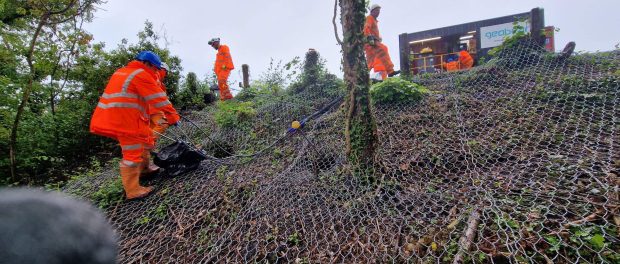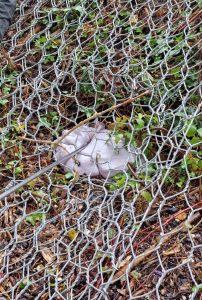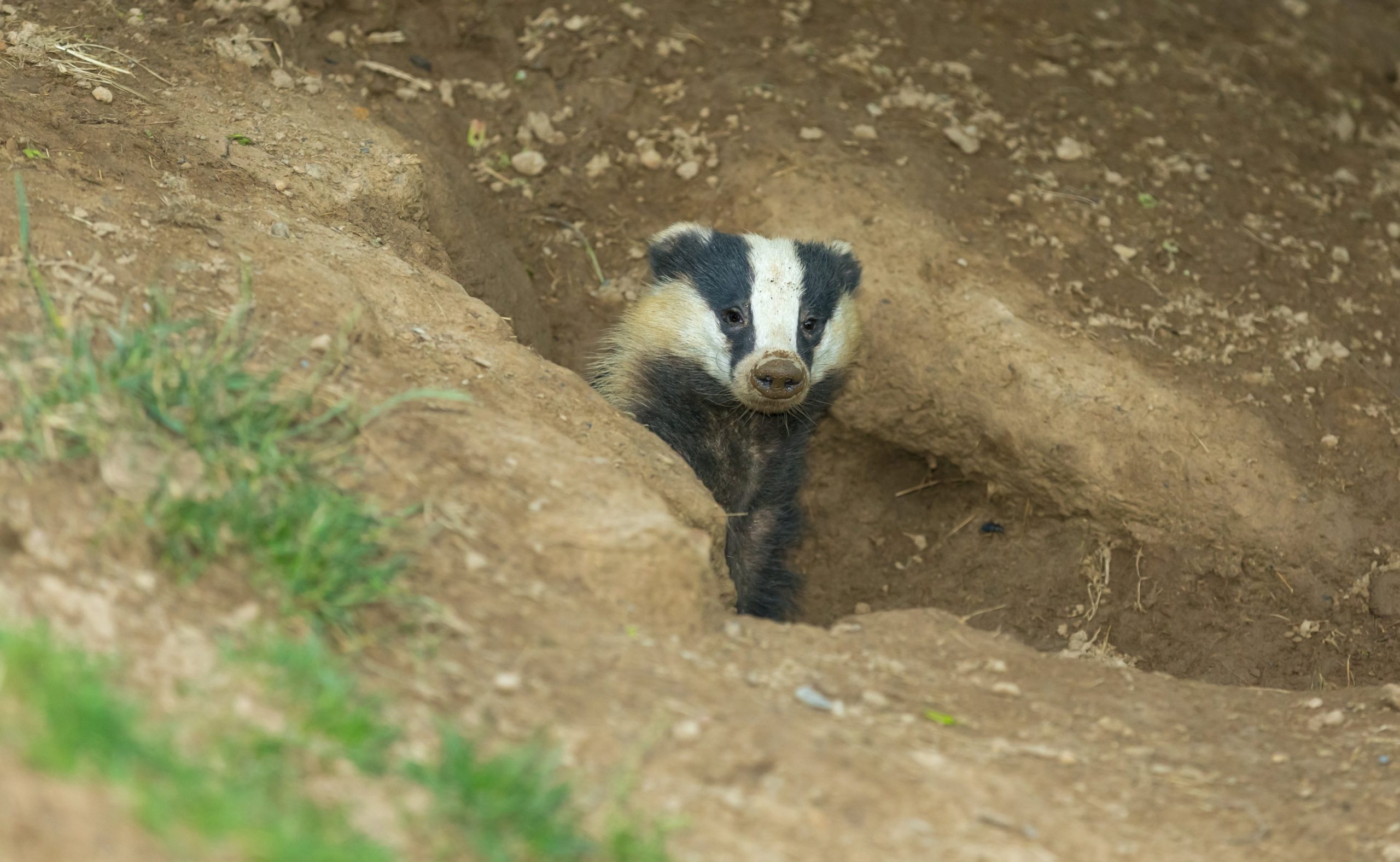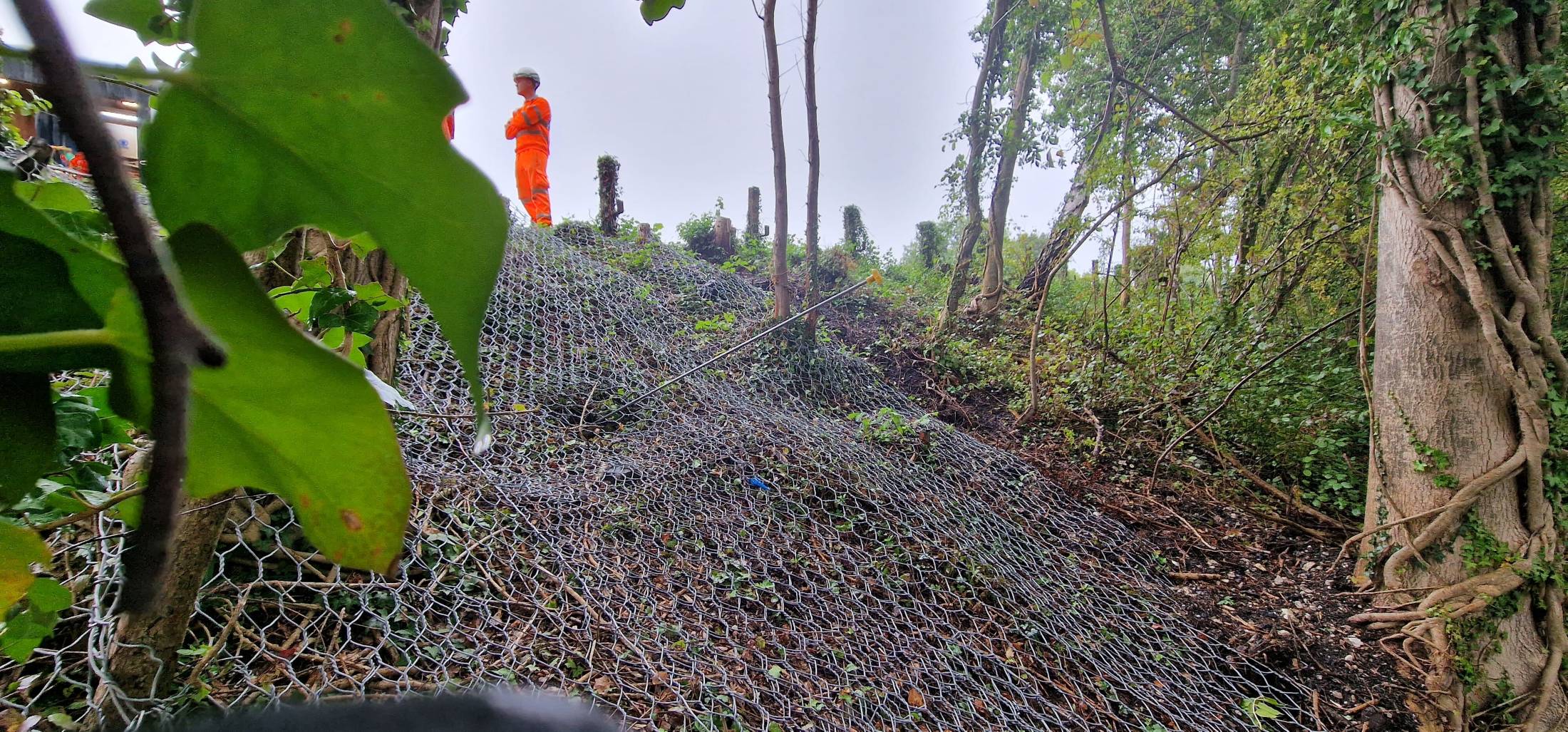How ground engineers safeguard railways while protecting badgers
 Geobear: Hassocks on site
Geobear: Hassocks on site
Burrowing badgers create costly challenges for railway stability worldwide. Their extensive setts, sometimes stretching over 100 metres, pose serious risks to rail infrastructure. While badgers play a vital role in our ecosystems, their tunnelling activities can lead to significant damage, with repair costs reaching hundreds of thousands to millions of pounds. Here, Richard Holmes, director for infrastructure at Geobear, a specialist in ground subsidence, explains how construction experts balance the protection of vital infrastructure with the need to safeguard these legally protected animals.
The damage of the rail infrastructure by badgers is a global occurrence. In 2023, Germany’s Deutsche Bahn reported that badgers had undermined approximately eleven kilometres of embankment on the Fröndenberg – Unna railway.
The creation of nearly 140 burrows caused damage that in some places was so severe it required complete replacement of the earthworks. The total repair project cost tens of millions of euros.
In the Netherlands, badger activity forced the closure of the Den Bosch-Boxtel route after tunnelling beneath the tracks. The CEO of ProRail, the company responsible for the Dutch rail network, confirmed this was the second shutdown in a week caused by badger activity.
Surveying and safeguarding badger setts
Protecting both the railways and the badgers is a careful balancing act. Any work involving badger setts requires a licence, as they are a protected species under UK law. Natural England oversees these licences, and construction work must avoid the sensitive breeding season from June 30 to December 1 to allow time for pregnancy, birth, and rearing of cubs.
Before any work can begin, an ecologist surveys the site to assess whether the sett is active, inactive or defunct. This ensures all badgers are properly safeguarded. If a sett is active, it is monitored, and once badgers leave, nets are placed over the entrances to prevent re-entry. The site is then monitored for at least 21 days to confirm no badger activity remains before engineering works commence.
Once the badgers have safely relocated, ground engineers assess how to stabilise the compromised ground. A ground-penetrating radar survey helps locate the most effective points to drill. In some cases, ground stabilisation be done directly at the sett entrances. An endoscopic camera is used inside the tunnels to monitor the repair process and ensure all voids are filled.
Case study: Hassocks rail embankment
 One example of this work took place at Hassocks. Here, an eight-meter-high rail embankment had lost structural integrity due to burrowing badgers. A total of 35 setts were found, with holes up to 500mm wide and between two to five meters deep, creating 25 cubic meters of voids beneath the embankment.
One example of this work took place at Hassocks. Here, an eight-meter-high rail embankment had lost structural integrity due to burrowing badgers. A total of 35 setts were found, with holes up to 500mm wide and between two to five meters deep, creating 25 cubic meters of voids beneath the embankment.
A solution was urgently needed to prevent embankment collapse and future track faults. Although a cement-based grout was considered, it was quickly ruled out. The remote location made transporting and applying cement difficult.
Cement also requires curing time, which would have meant extended rail closures. In addition, adding heavy cement to the embankment risked destabilising it further, as the extra weight could exceed what the foundation could support, potentially triggering slope instability.
Instead, the engineers opted for geopolymer injection, carried out by Geobear. To access the site, Geobear deployed its purpose-built rail injection unit. Equipment and materials were transported by road-rail vehicles (RRV’s) and trailer, to the site, just south of Hassocks station.
A two-part geopolymer resin was pumped through hoses from the injection unit down injection tubes into the drilled holes. The components mixed during injection, filling the voids as the tubes were gradually withdrawn. The project was successfully completed within the required time frame, fully stabilising the embankment and eliminating any risk of future track faults.
Ground engineers face a unique challenge when dealing with badger damage. Their work not only protects vital rail infrastructure but also ensures the continued protection of the badger population.
To read more about how ground engineers protect vital rail infrastructure, visit Geobear’s case studies page.



